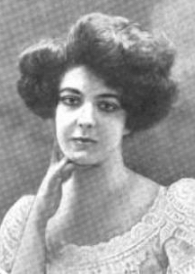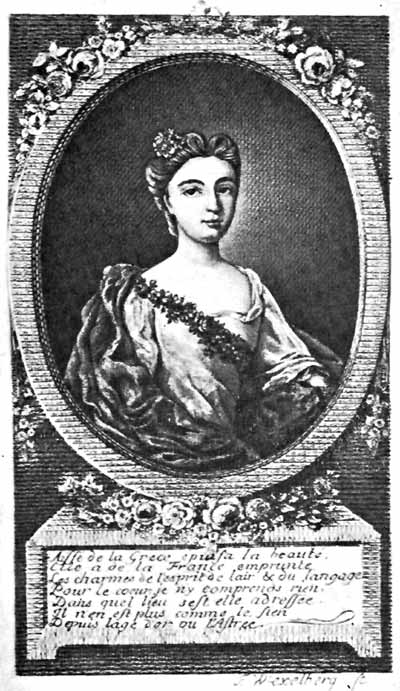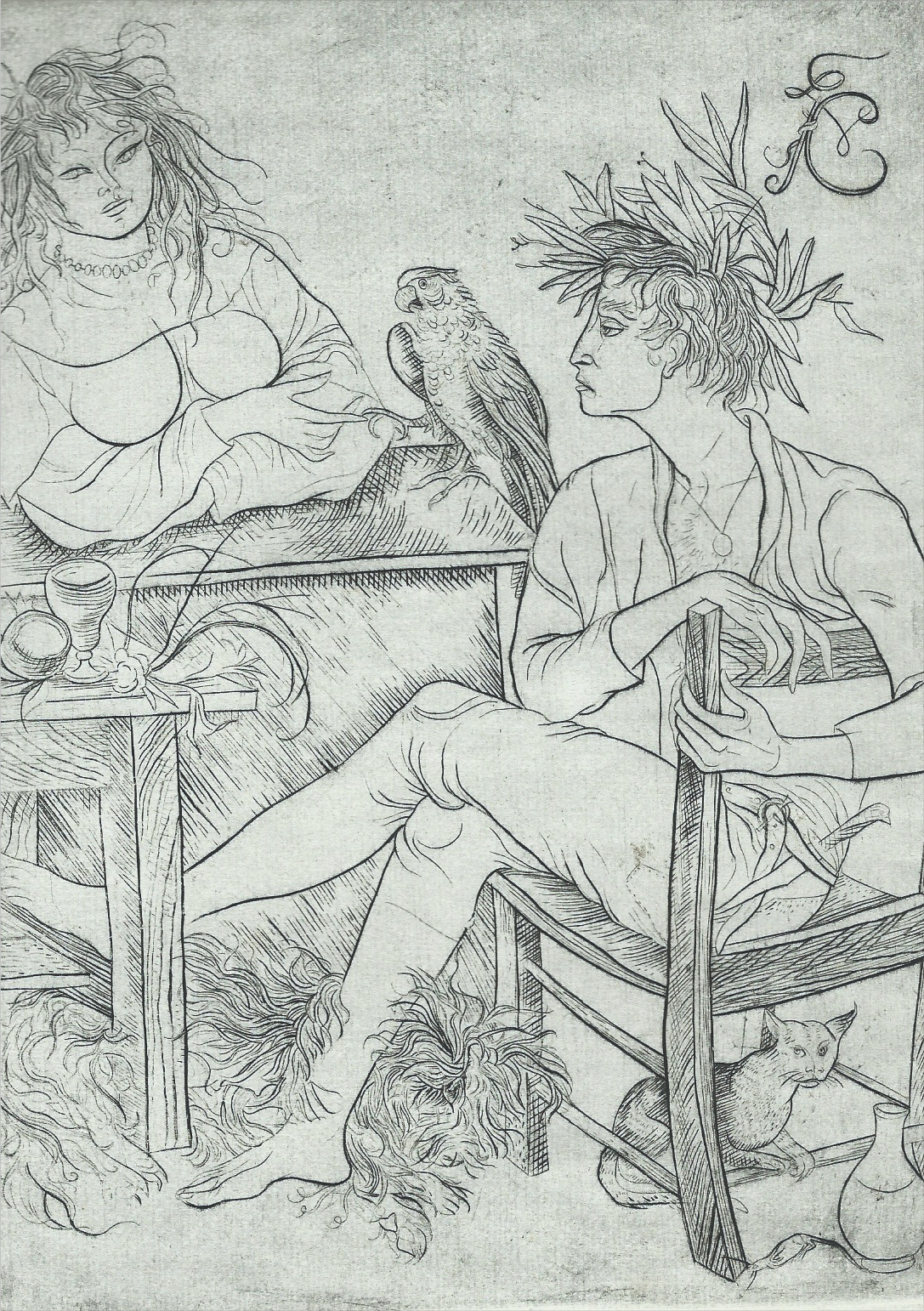|
Jane Catulle-Mendès
Jeanne Primitive Mette (16 March 1867 – 9 June 1955), better known under her married name, Jane Catulle-Mendès, and as a French poet who also wrote plays and other prose works, and contributed to Pierre Lafitte (journalist), Pierre Lafitte's ''Femina (France), Femina''. Life Jane was born in Paris 16 March 1867, daughter of Célestin Marie Mette and Eugénie Mayer who had married in Neuilly-sur-Seine, Seine (now Hauts-de-Seine), November 18, 1869. She first married Louis Alexandre Boussac, a merchant, with whom 1889 she had a son Marcel Boussac, Marcel. Marcel would become an industrialist tycoon whose holdings included the House of Dior and a highly successful racehorse stud, and who married the singer Fanny Heldy, Fanny Held in 1939. She and Boussac divorced on 27 June 1895, and she married Symbolism (arts), Symbolist poet Catulle Mendès in Seine-et-Oise, July 8, 1897, who had separated from writer Judith Gautier in 1878 (divorced December 1896). His three daughters, ... [...More Info...] [...Related Items...] OR: [Wikipedia] [Google] [Baidu] |
Boulevard Malesherbes
Boulevard Malesherbes is a boulevard in central Paris, France, running northwest between the Church of the Madeleine in the 8th arrondissement, and the Porte d'Asnières in the 17th arrondissement. It is one of the streets created during the renovations of Paris undertaken by the Prefect of the Seine, Georges-Eugene Haussmann, in the 1850s and 1860s. History The creation of the Boulevard Malesherbes was first decreed by Napoléon I in 1808, as part of his reconfiguration of the area around the Madeleine. A second artery was judged necessary in order to create balance with the rue de la Madeleine to the east of the Madeleine. The two streets branch off of the Rue Royale at angles and form an emplacement for the Madeleine. It is named in honor of Guillaume-Chrétien de Lamoignon de Malesherbes, a minister and official under Louis XV and Louis XVI who was executed by guillotine during the Revolution. Only a rudimentary street was formed near the Madeleine; in 1852 the city resurr ... [...More Info...] [...Related Items...] OR: [Wikipedia] [Google] [Baidu] |
Charlotte Aïssé
Charlotte Aïssé (a corruption of Haïdé; – 13 March 1733), French letter-writer, was the daughter of a Circassians, Circassian chief, and was born about 1694. Life Her father's palace was pillaged by the Ottoman Empire, Turks, and as a child of four years old she was sold to the comte Charles de Ferriol, the French ambassador at Constantinople. She was brought up in Paris by Ferriol's sister-in-law, Marie-Angélique de Tencin, with her own sons, (1697–1774) and Charles-Augustin de Ferriol d'Argental, d'Argental (1700–1788). Her great beauty and romantic history made her the fashion, and she attracted the notice of the regent, Philip II, Duke of Orléans, whose offers she had the strength of mind to refuse. She formed a deep and lasting attachment to Blaise-Marie d'Aydie (1692–1761), a knight of Malta, by whom she had a daughter. She died in Paris. ''Lettres de Mademoiselle Aïssé à Madame C…'' Her letters to her friend Julie Calandrini (; 1668–1754), were firs ... [...More Info...] [...Related Items...] OR: [Wikipedia] [Google] [Baidu] |
Françoise Pascal
Françoise Pascal (born 14 October 1949) is a British actress, singer, dancer, fashion model, and producer born in Mauritius to French parents. She appeared in numerous film and television productions in her peak throughout the late 1960s to early 1980s. Film roles include two films with Peter Sellers, '' There’s A Girl In My Soup'' (1970) and ''Soft Beds, Hard Battles'' (1973). Her career further advanced with appearances in ''Burke & Hare'' (1972), '' La Rose De Fer'' (1973), and ''Keep It Up Downstairs'' (1976). Her greatest success was on the hit British sitcom ''Mind Your Language'' as Danielle Favre. She also became established as a sex symbol as Penthouse Pet of the Month for August 1970, and appearing on the first cover of Club International in 1972. Early life Pascal was born in Mauritius, then a colony of the United Kingdom, to Marcel and Claire Pascal. She grew up with her parents and four siblings in Mauritius, until age 6 when her family moved to London. She also ... [...More Info...] [...Related Items...] OR: [Wikipedia] [Google] [Baidu] |
Pierre De Ronsard
Pierre de Ronsard (; 11 September 1524 – 27 December 1585) was a French poet or, as his own generation in France called him, a "prince of poets". Early life Pierre de Ronsard was born at the Manoir de la Possonnière, in the village of Couture-sur-Loir, Vendômois (in present-day Loir-et-Cher). Baudouin de Ronsard or Rossart was the founder of the French branch of the house, and made his mark in the early stages of the Hundred Years' War. The poet's father was Louis de Ronsard, and his mother was Jeanne de Chaudrier, of a family both noble and well connected. Pierre was the youngest son. Louis de Ronsard was ''maître d'hôtel du roi'' to Francis I, whose captivity after Pavia had just been softened by treaty, and he had to quit his home shortly after Pierre's birth. The future poet was educated at home in his earliest years and sent to the Collège de Navarre in Paris at the age of nine. When Madeleine of France was married to James V of Scotland, Ronsard was attached a ... [...More Info...] [...Related Items...] OR: [Wikipedia] [Google] [Baidu] |
Rémy Belleau
Remy (or Rémi) Belleau (1528 – 6 March 1577) was a poet of the French Renaissance. He is most known for his paradoxical poems of praise for simple things and his poems about precious stones. Life Remy was born in Nogent-le-Rotrou. A nobleman (under the tutelage of the House of Lorraine, Lorraine family), he did his studies under Marc Antoine Muret and George Buchanan (humanist), George Buchanan. As a student, he became friends with the young poets Jean de La Péruse, Étienne Jodelle, Jean de La Taille and Pierre de Ronsard and the latter incorporated Remy into the "La Pléiade", a group of revolutionary young poets. Belleau's first published poems were odes, ''les Petites Inventions'' (1556), inspired by the ancient lyric Greek collection attributed to Anacreon (poet), Anacreon and featuring poems of praise for such things as butterflies, oysters, cherries, coral, shadows, turtles. In the 1560s, Belleau tried his hand at a mixed verse and prose form modeled on the Italian ... [...More Info...] [...Related Items...] OR: [Wikipedia] [Google] [Baidu] |
Margaret Of Valois-Angoulême
Marguerite de Navarre (french: Marguerite d'Angoulême, ''Marguerite d'Alençon''; 11 April 149221 December 1549), also known as Marguerite of Angoulême and Margaret of Navarre, was a princess of France, Duchess of Alençon and Berry, and Queen of Navarre by her second marriage to King Henry II of Navarre. Her brother became King of France, as Francis I, and the two siblings were responsible for the celebrated intellectual and cultural court and salons of their day in France. Marguerite is the ancestress of the Bourbon kings of France, being the mother of Jeanne d'Albret, whose son, Henry of Navarre, succeeded as Henry IV of France, the first Bourbon king. As an author and a patron of humanists and reformers, she was an outstanding figure of the French Renaissance. Samuel Putnam called her "The First Modern Woman". Early life Marguerite was born in Angoulême on 11 April 1492, the eldest child of Louise of Savoy and Charles, Count of Angoulême. Her father was a descendant of ... [...More Info...] [...Related Items...] OR: [Wikipedia] [Google] [Baidu] |
Charles, Duke Of Orléans
Charles of Orléans (24 November 1394 – 5 January 1465) was Duke of Orléans from 1407, following the murder of his father, Louis I, Duke of Orléans. He was also Duke of Valois, Count of Beaumont-sur-Oise and of Blois, Lord of Coucy, and the inheritor of Asti in Italy via his mother Valentina Visconti. He is now remembered as an accomplished medieval poet, owing to the more than five hundred extant poems he produced, written in both French and English, during his 25 years spent as a prisoner of war and after his return to France. Accession Charles was born in Paris, the son of Louis I, Duke of Orléans and Valentina Visconti, daughter of Gian Galeazzo Visconti, Duke of Milan. He acceded to the duchy at the age of thirteen after his father had been assassinated on the orders of John the Fearless, Duke of Burgundy. Charles was expected to carry on his father's leadership against the Burgundians, a French faction which supported the Duke of Burgundy. The latter was ... [...More Info...] [...Related Items...] OR: [Wikipedia] [Google] [Baidu] |
François Villon
François Villon (Modern French: , ; – after 1463) is the best known French poet of the Late Middle Ages. He was involved in criminal behavior and had multiple encounters with law enforcement authorities. Villon wrote about some of these experiences in his poems. Biography Birth Villon was born in Paris in 1431. One source gives the date as .Charpier 1958, "1er avril 1431 (vieux style) ou 19 avril 1432 (nouveau style) : naissance à Paris, de ''François de Montcorbier'', alias ''des Loges'', qui deviendra François Villon pril 1, 1431 (old style) or April 19, 1432 (new style): birth in Paris of ''François de Montcorbier'', alias ''des Loges'', who would become François Villon Early life Villon's real name may have been François de Montcorbier or François des Loges: both of these names appear in official documents drawn up in Villon's lifetime. In his own work, however, Villon is the only name the poet used, and he mentions it frequently in his work. His t ... [...More Info...] [...Related Items...] OR: [Wikipedia] [Google] [Baidu] |
Virgil
Publius Vergilius Maro (; traditional dates 15 October 7021 September 19 BC), usually called Virgil or Vergil ( ) in English, was an ancient Roman poet of the Augustan period. He composed three of the most famous poems in Latin literature: the ''Eclogues'' (or ''Bucolics''), the ''Georgics'', and the epic ''Aeneid''. A number of minor poems, collected in the ''Appendix Vergiliana'', were attributed to him in ancient times, but modern scholars consider his authorship of these poems as dubious. Virgil's work has had wide and deep influence on Western literature, most notably Dante's ''Divine Comedy'', in which Virgil appears as the author's guide through Hell and Purgatory. Virgil has been traditionally ranked as one of Rome's greatest poets. His ''Aeneid'' is also considered a national epic of ancient Rome, a title held since composition. Life and works Birth and biographical tradition Virgil's biographical tradition is thought to depend on a lost biography by the Roman ... [...More Info...] [...Related Items...] OR: [Wikipedia] [Google] [Baidu] |
Alfred De Musset
Alfred Louis Charles de Musset-Pathay (; 11 December 1810 – 2 May 1857) was a French dramatist, poet, and novelist.His names are often reversed "Louis Charles Alfred de Musset": see "(Louis Charles) Alfred de Musset" (bio), Biography.com, 2007, webpageBio9413"Chessville – Alfred de Musset: Romantic Player", Robert T. Tuohey, Chessville.com, 2006, webpage. Along with his poetry, he is known for writing the autobiographical novel ''La Confession d'un enfant du siècle'' (''The Confession of a Child of the Century''). Biography Musset was born in Paris. His family was upper-class but poor; his father worked in various key government positions, but never gave his son any money. Musset's mother came from similar circumstances, and her role as a society hostess – for example her drawing-room parties, luncheons and dinners held in the Musset residence – left a lasting impression on young Alfred. An early indication of his boyhood talents was his fondness for acting impromptu m ... [...More Info...] [...Related Items...] OR: [Wikipedia] [Google] [Baidu] |
Lord Byron
George Gordon Byron, 6th Baron Byron (22 January 1788 – 19 April 1824), known simply as Lord Byron, was an English romantic poet and Peerage of the United Kingdom, peer. He was one of the leading figures of the Romantic movement, and has been regarded as among the greatest of English poets. Among his best-known works are the lengthy Narrative poem, narratives ''Don Juan (poem), Don Juan'' and ''Childe Harold's Pilgrimage''; many of his shorter lyrics in ''Hebrew Melodies'' also became popular. Byron was educated at Trinity College, Cambridge, later traveling extensively across Europe to places such as Italy, where he lived for seven years in Venice, Ravenna, and Pisa after he was forced to flee England due to lynching threats. During his stay in Italy, he frequently visited his friend and fellow poet Percy Bysshe Shelley. Later in life Byron joined the Greek War of Independence fighting the Ottoman Empire and died leading a campaign during that war, for which Greeks rev ... [...More Info...] [...Related Items...] OR: [Wikipedia] [Google] [Baidu] |







